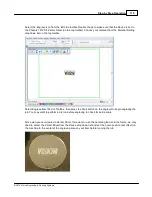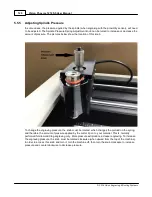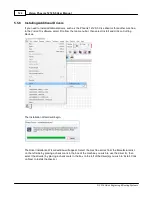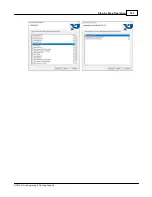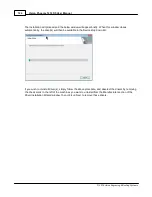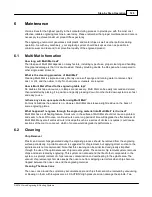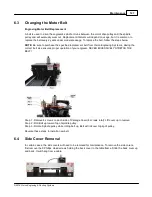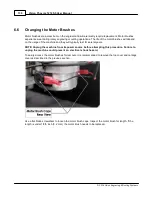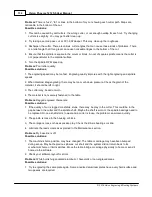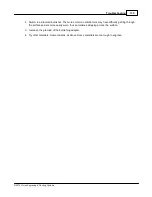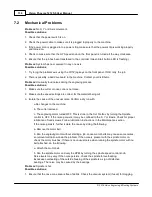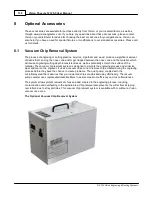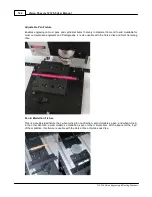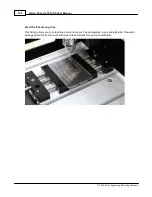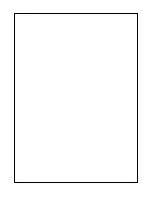
Troubleshooting
133
© 2018 Vision Engraving & Routing Systems
Problem:
When using a nose cone, the engraving is uneven.
Possible solutions:
1. The spindle is not ”zeroed“ to your material.
2. When burnishing, there may not be enough pre-load set to adjust for material thickness changes. If
using the Set Surface function to control engraving depth and not the Prox sensor, the surface
position may not be low enough to consistently engrave. Increasing the Set Surface depth should
correct the problem.
3. The engraving speed may be too fast for the type of material being engraved. Check the
manufacturer’s recommendation. The cutter may be bouncing on the surface. Some hard materials
may exhibit this problem.
4. The cutter may be defective or broken. Replace it.
5. The material may be defective, or of poor quality.
6. The vacuum chip removal system may be plugged, or the hose is blocked and engraving chips are
caught between the nose cone and the material.
7. The nose cone or vacuum nose is loose.
Problem:
”Shadowing“ occurs while engraving certain materials.
Possible solutions:
1. Leave the protective film on the engraving material during engraving.
2. Use a plastic nose cone instead of a metal one.
3. The nose cone may be damaged. Inspect for burrs or roughness. Try using an emery cloth to polish
the nose.
4. Use less spindle spring pressure. Excessive down pressure will leave a rub mark on almost any
plastic material.
Problem:
You are not using a nose cone and you have uneven engraving.
Possible solutions:
1. Switch to a nose-riding method.
2. Use a different method of holding the material. If double-sided tape is being used, it may be thick
enough to change your surface flatness and the engraving depth.
3. The T-slot table may not be flat, or has been installed improperly.
4. The table the machine is sitting on may not be a level surface.
5. Make sure the spindle spring pressure knob is locked all the way down.
Hint:
While it’s true that you can do non-nose riding engraving, it’s not easy to hold any controlled
accuracy on the depth. This takes flat material, a very flat table and some degree of skill and confidence.
It also takes an application where some amount of uneven engraving may be tolerated.
Problem:
There are ”tails“ or ”swirls“ in the corners of my engraving.
Possible solutions:
1. The cutter speed is too fast relative to your X-Y speed. Slow your spindle speed down or increase
your table speed.
2. The cutter is worn or damaged. Replace it, or have it re-sharpened.
Содержание Phoenix 1212 S5
Страница 1: ... 2018 Vision Engraving Routing Systems Vision Phoenix 1212 S5 User Manual Revised 12 7 2018 ...
Страница 16: ...Vision Phoenix 1212 S5 User Manual 16 2018 Vision Engraving Routing Systems ...
Страница 24: ...Vision Phoenix 1212 S5 User Manual 24 2018 Vision Engraving Routing Systems The installation will continue ...
Страница 44: ...Vision Phoenix 1212 S5 User Manual 44 2018 Vision Engraving Routing Systems ...
Страница 113: ...Step by Step Operation 113 2018 Vision Engraving Routing Systems ...
Страница 121: ...Step by Step Operation 121 2018 Vision Engraving Routing Systems ...
Страница 123: ...Step by Step Operation 123 2018 Vision Engraving Routing Systems ...
Страница 147: ...Optional Accessories 147 2018 Vision Engraving Routing Systems ...
Страница 148: ......

